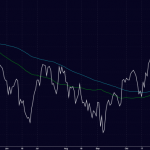Executive Summary: Direct foreign investments in U.S. commercial real estate accounted for 17 percent of total dollar volume during 2015, but cross-border activity has trended lower so far this year.
Major U.S. commercial property sectors and hotels continue to post strong performance, reinforcing property values and encouraging investment.
Canada is perennially the largest foreign buyer of U.S. properties and heads the list in the first half of 2016, followed by China, Singapore and Qatar.
Single-asset purchases likely comprise the largest portion of the foreign capital flowing into U.S. commercial real estate. International high-net-worth individuals have made inroads into the private investor market segment.
The EB-5 Immigrant Investor Program has emerged as a significant channel for bringing foreign capital ashore and as a way for foreign nationals to gain a visa. Investments are often deployed as mezzanine debt rather than equity.

Foreign demand for U.S. commercial real estate elevated.
Global financial market volatility, weak foreign economies, low alternative investment yields and a variety of factors creating uncertainty have reinforced the advantages of direct investment in U.S. commercial real estate. Together, these forces have drawn additional foreign investment to the U.S., encouraging many to focus on capital preservation and asset stability rather than yield. Since foreign investors’ objectives are often quite different from their domestic counterparts, they can occasionally outbid domestic parties for specific assets. Because the source of foreign capital is often hidden and channeled through U.S.-based funds and entities, competitors and sellers do not realize the bidder is actually from abroad.
Large deals grab headlines.
Considerable press is dedicated to high profile acquisitions made by international investors such as the $1.95 billion purchase of the Waldorf Astoria in New York City by Chinese investors last year. However, the majority of the acquisitions tend to be smaller assets purchased through funds and domestic intermediaries. Nonetheless, total direct foreign investment, where the international buyer can be identified, in U.S. commercial real estate totaled more than $90 billion in 2015, accounting for 17 percent of the total U.S. commercial real estate dollar volume. Historically, international investment in the U.S. has averaged 9 percent of the total. The rising strength of the dollar has slowed the pace of foreign investment so far this year. However, international investors still accounted for an estimated 11 percent of the dollar volume of all U.S. properties sold in the first half of 2016.
Gateway markets lead the list.
Foreign investors have traditionally favored gateway cities, partly because of the brand value of well known metropolitan areas, but also because these cities tend to face lower pricing volatility and maintain high market liquidity. Although some international buyers, particularly Canadians, venture to a wider range of markets, 43 percent of last year’s foreign capital invested in commercial real estate was concentrated in five major markets: New York City, Los Angeles, Atlanta, Chicago and Dallas. For the first half of 2016, San Francisco and Phoenix appeared in the top five, pushing out Atlanta and Dallas. The bulk of the foreign capital spent through the first half of 2016 was concentrated in office and hotel assets, comprising 72 percent of the foreign dollar volume. From a transactional perspective, apartments and industrial properties were the leaders, representing a combined 57 percent of direct purchases by cross border capital














Leave A Comment